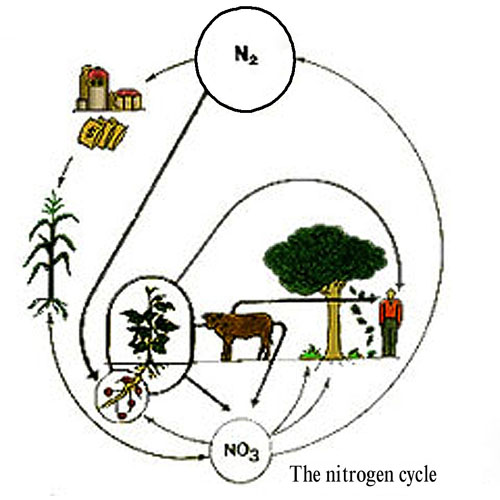|

Nitrogen is an essential element for life because it is a fundamental component of protein and nucleic acids. Unfortunately the supply of nitrogen for plants in soil is limited and for economic returns in agriculture management of the crop's nitrogen supply is critical. Application of fertilizer nitrogen can be costly increasing food prices, its manufacture uses the earth's dwindling energy reserves, and its use significantly impacts our environment. Gaseous dinitrogen constitutes 78% of Earth's atmosphere, but most life forms are unable to use it. The exception is some microorganisms that use gaseous dinitrogen directly from air. In nature, nitrogen cycles between the atmosphere, the soil, and life. In agriculture, the most important nitrogen-fixing bacteria are called rhizobia because they form a very close symbiotic relationship with leguminous plants. Many leguminous plants are important crops. The rhizobia invade the roots and cause swellings in the root cortex. These swellings are called root nodules. The bacteria are located inside the nodules where they reduce gaseous dinitrogen to ammonium. The ammonium combines with sugars and other organic compounds supplied by the plant to produce proteins and nucleic acids.
|